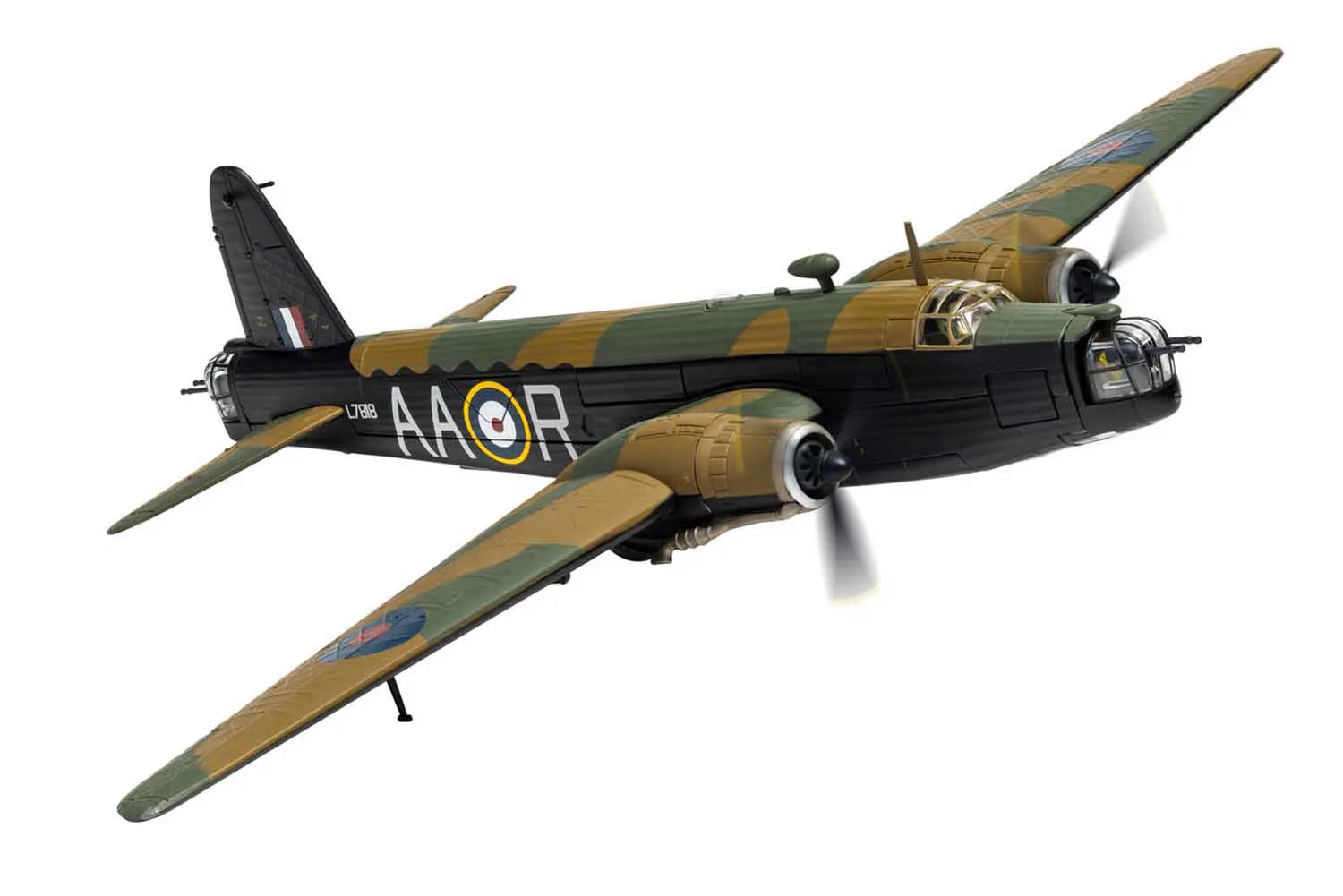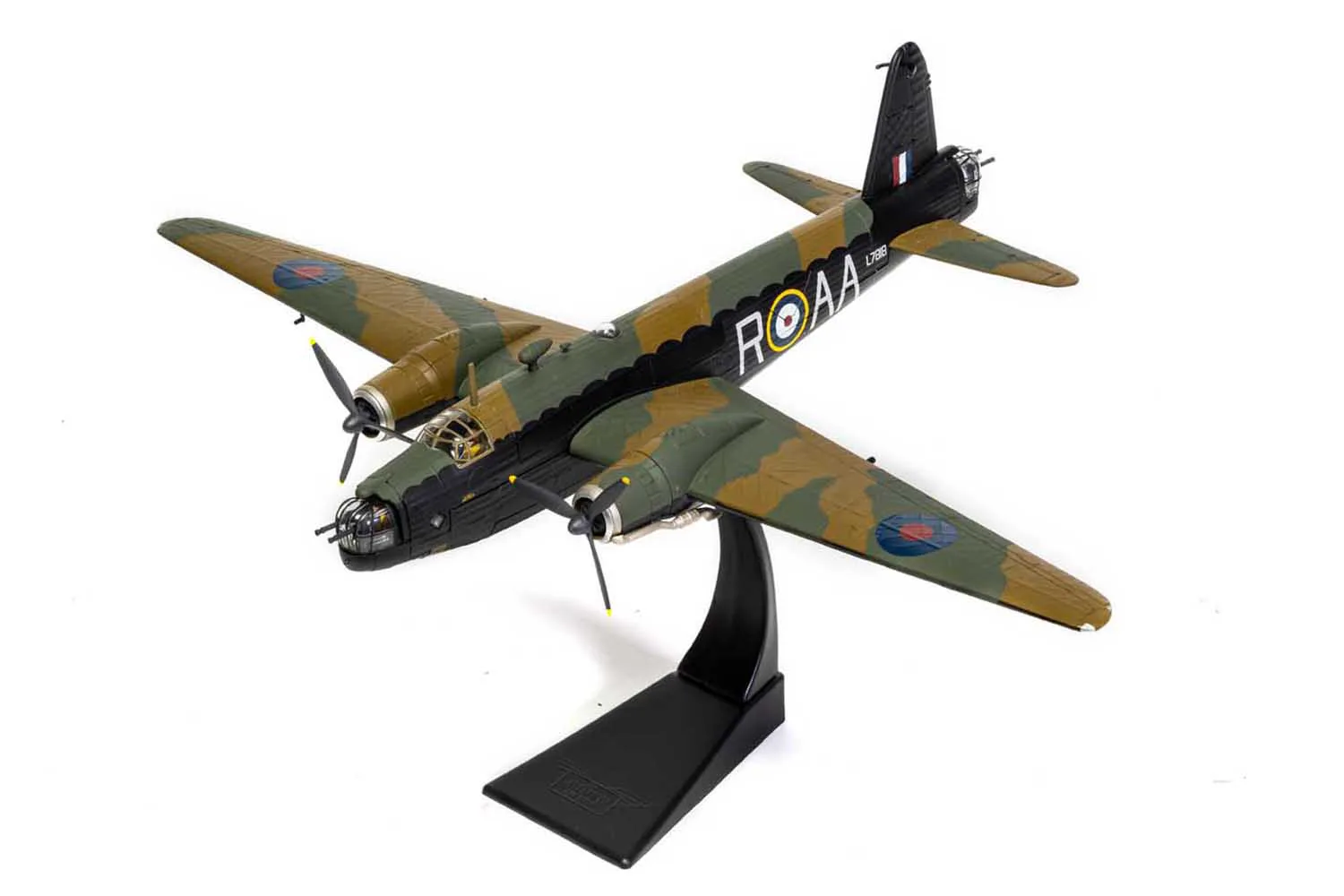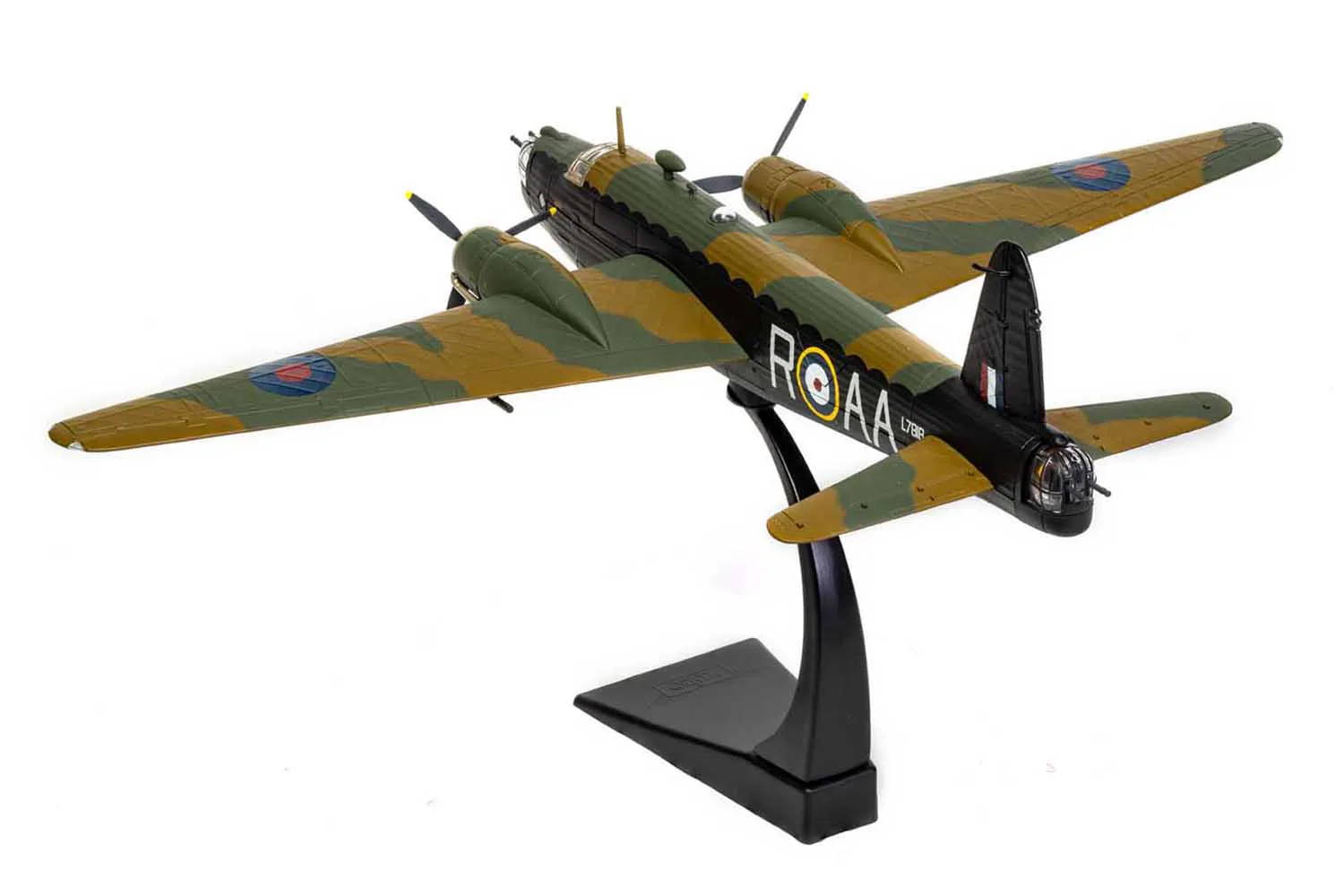Vickers Wellington Ward VC
Vickers Wellington Mk.IC
L7818 AA-R, Sgt James Allen Ward, No.75
(New Zealand) Squadron, Feltwell, Norfolk,
England, night of 7/8th July 1941 wing fire
Victoria Cross winning actions
Having successfully released their bombs over the
German city of Munster on the night of 7th/8th July
1941, the crew of Vickers Wellington L7818 set
course for their home station at Feltwell and hoped
for an uneventful return flight. Those hopes were
dashed when co-pilot James Allen Ward noticed
a sinister shape stalking their aircraft in the
night sky, a Luftwaffe Bf 110 nighfighter.
Before he could warn his pilot, the enemy
fighter positioned itself under the Wellington
and unleashed a hail of bullets and cannon
shells into its fuselage, leaving it severely
damaged and on fire. On seeing the severity
of the fire, the pilot instructed Ward to
prepare the crew to abandon the aircraft
and as a parting, ironic comment in this
desperate situation, also said, ‘see what
you can do about that damned fire!’
Ward took him at his word, cutting
a hole in the fuselage of the bomber
and attempting to extinguish the flames using fire
extinguishers, however the savage slipstream made these
efforts futile. What he did next was quite extraordinary –
he crawled through the astrodome hatch on the spine of
the bomber and onto the wing of the aircraft. Clinging to
the exposed geodetic framework of the Wellington, Ward
slowly made his way to the wing fire and stuffed a canvas
sheet into the gaping hole, putting out the fire in the process.
Completely exhausted due the slipstream, he was pulled back into the
aircraft by his crewmates, who could hardly believe what they had just
witnessed. Though still badly damaged, the bomber made it back to an RAF
emergency landing ground and the crew all survived this incredible ordeal,
thanks to the selfless act of bravery performed by Sgt James Allen Ward.








